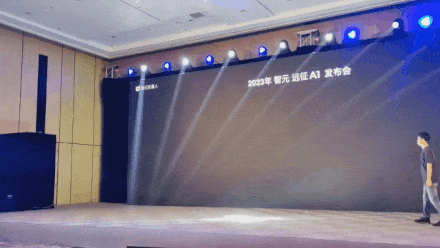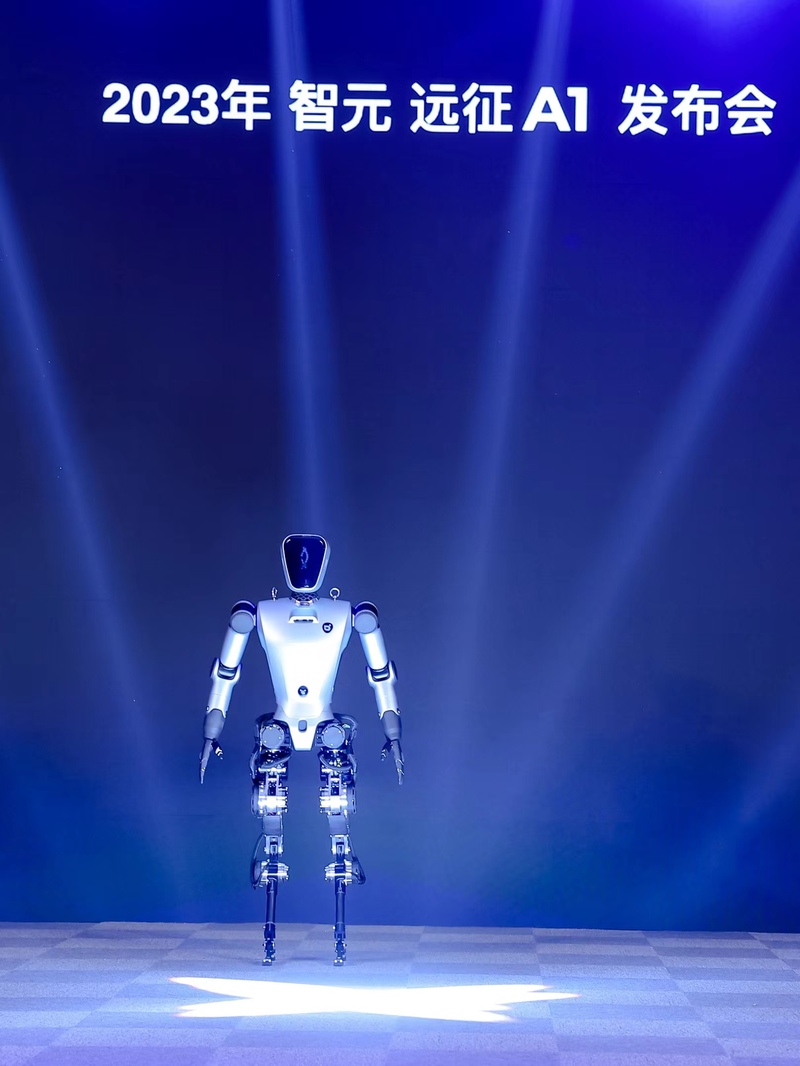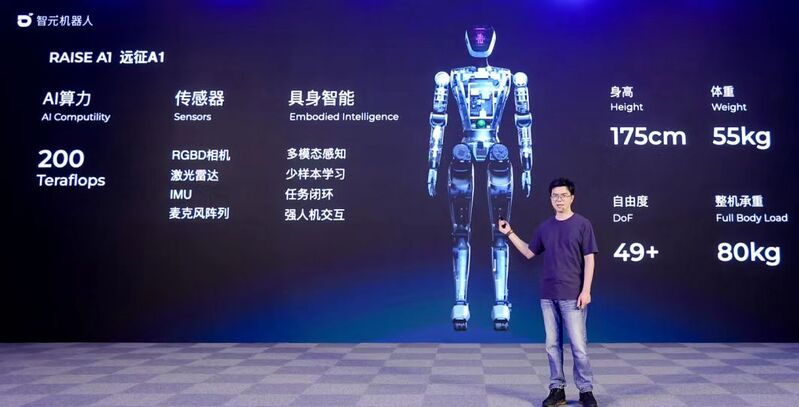Zhihuijun released a humanoid robot in Shanghai, and "Expedition A1" will enter the manufacturing and domestic service industries.
With the advent of Tesla humanoid robot "Optimus Prime" and artificial intelligence model ChatGPT, the humanoid robot equipped with the big model "brain" has become a new track for scientific and technological entrepreneurship. Today, Shanghai Zhiyuan Robot Company released its self-developed humanoid robot prototype "Expedition A1", which means that this "unicorn" enterprise has entered a new track and started an expedition to the goal of "universal artificial intelligence with body".
Besides "Expedition A1", this conference also has a protagonist-Zhi Huijun (real name: Peng Zhihui) who has 2.49 million fans in Bi Li and 960,000 fans on Sina Weibo. As the co-founder of Zhiyuan Robot, he is responsible for the overall design and architecture of humanoid robot. After introducing the parameters, performance and future application prospect of the robot at the press conference, this "post-90s" young man invited "Expedition A1". I saw that it walked quickly to the center of the stage with steady steps, then turned to face the audience and completed its first public appearance.

"Genius boy" went to Shanghai to start a business for his dream.
Peng Zhihui is a master of University of Electronic Science and Technology of China. He joined a large enterprise in 2020 and engaged in research and development in the field of artificial intelligence edge computing, and achieved good results.
However, he has always had a robot dream in his heart. As a well-known UP master, Zhi Huijun posted many videos of self-developed robots on bilibili, such as "I made my bike self-driving! ""I built a robotic arm of Iron Man! It took three months to build the strongest small TV in bilibili! 》。 These videos have received millions of hits, and fans nicknamed Zhi Huijun "Wild Iron Man".

At the end of last year, Peng Zhihui left a large enterprise and embarked on the road of entrepreneurship. As expected, he and his collaborators founded a robot company, which is headquartered in Shanghai. The reason for choosing to start a business in Shanghai is that this international metropolis has many high-end R&D talents, a developed high-end manufacturing supply chain, and industrial policies to support the development of intelligent robot enterprises, and international exchanges and cooperation are also very convenient.
In March of this year, Zhiyuan Robot settled in Cambridge, Pudong. As soon as the company was established, it embarked on the fast track of development. So far, it has completed four rounds of financing, and its valuation has reached the "unicorn" standard; At present, the number of employees is nearly 100, of which R&D personnel account for about 80%.
New research and development institutions send chief scientists.
The rapid development of this enterprise is also inseparable from the incubation service of Shanghai Institute of Artificial Intelligence. This research institute belongs to a new research and development institution, and undertakes the task of building a functional platform in the field of artificial intelligence in Shanghai. Following the development paradigm of "innovation strategy in colleges and universities, leading by industry experts and landing by industry teams", Shanghai Institute of Artificial Intelligence has established more than ten R&D centers and set up a research and industrialization team of nearly 400 people. In the process of cultivating Zhiyuan robot, the Institute sent Yan Weixin, the chief scientist and supervisor of Robotics Institute of Shanghai Jiaotong University, and the team of engineers to join the founding team of the company in the overall design and technical research of humanoid robot.
"In the past few days, all the staff have exploded, and they probably just moved their home to the company." In May this year, Zhi Huijun sent this Weibo and a picture with toothpaste and toothbrush on his desk, which showed the hardships of building a humanoid robot.
Nowadays, the humanoid robot "Expedition A1" developed by the R&D team day and night has come out. It is 1.75 meters high and weighs 53 kilograms. The whole body has 49 degrees of freedom, that is, it is equipped with 49 electric joints, and adopts high-density electric drive mode, and the peak torque reaches 300 Nm.

"It walks faster than me." Yan Weixin introduced that the fastest walking speed of "Expedition A1" is 7 km/h, and it can avoid obstacles by relying on visual sensors and multi-line lidar. The maximum load of one arm is 5 kg. At present, the arm strength is not as good as that of adults, but the leg strength is close to that of adults. Its dexterous hand has five fingers, and it can grab things like a human and complete a variety of fine movements.
The big model "Duannao" makes the robot considerate.
The "expedition" goal of this humanoid robot is "universal artificial intelligence", that is, to make the robot have universal artificial intelligence, to master various skills through self-learning, to interact with the surrounding environment in a more natural and intelligent way, and to complete various tasks. After the big model of artificial intelligence came out, people saw the feasibility of realizing "universal artificial intelligence with body".
According to reports, a large model has been deployed in the "Expedition A1". It is the product of the R&D team’s optimization iteration of the open source big model, especially for the needs of robots to deal with various situations when grabbing objects. The R&D team has optimized the big model and strengthened its real-time perception ability. After completing the model optimization training, the company adopted the "CPU+GPU" architecture, developed a "telebrain" (telebrain) without networking, and installed it in the robot.

With the big model "Duannao", "Expedition A1" can understand natural language instructions and analyze the speaker’s intention. For example, if the host says "I want a glass of water" or "I’m thirsty", it can understand, then go to the water dispenser or other places to get water and hand the cup to the host. In the manufacturing scene, it doesn’t have to run according to the set trajectory like a traditional industrial robot, but learns independently like a human. Then, according to the actual working conditions, it combines the learned "atomic action" into a "workflow" with the optimal trajectory, thus completing the operation more efficiently.
Peng Zhihui said that the company plans to release commercial humanoid robots in the second or second half of next year, so that it can enter the manufacturing and domestic service industries as soon as possible. In the field of industrial intelligence, humanoid robots with large models are suitable for industries with high complexity, such as 3C (computer, communication and consumer electronics) manufacturing, and can quickly adapt to the scene, which is more efficient and flexible than traditional industrial robots. In the field of domestic service, the "Expedition" robot has the functions of cooking Chinese food, serving dishes, using washing machines, drying clothes, folding clothes and ironing clothes, and is expected to be qualified as a "robot housekeeper" in the near future.